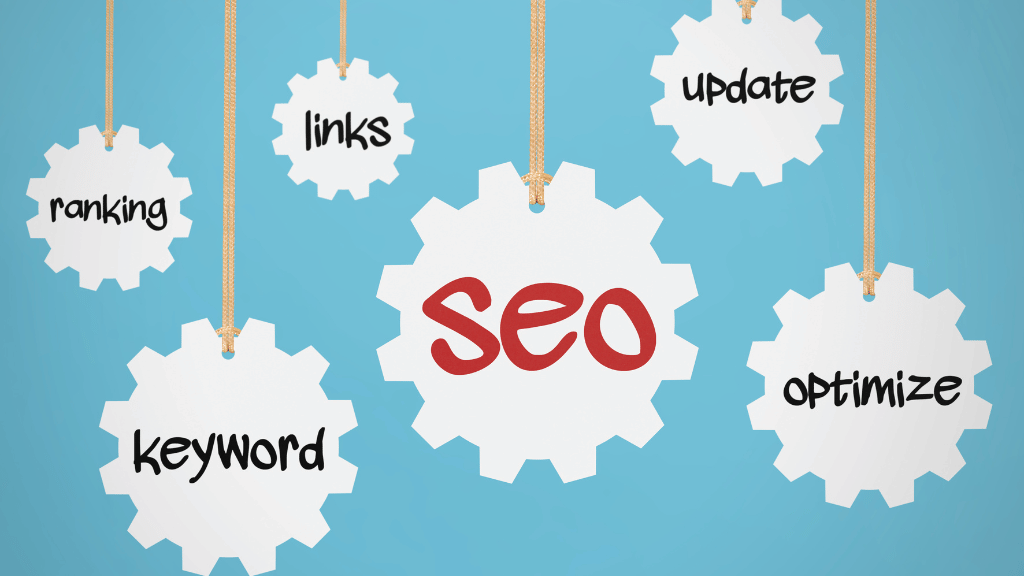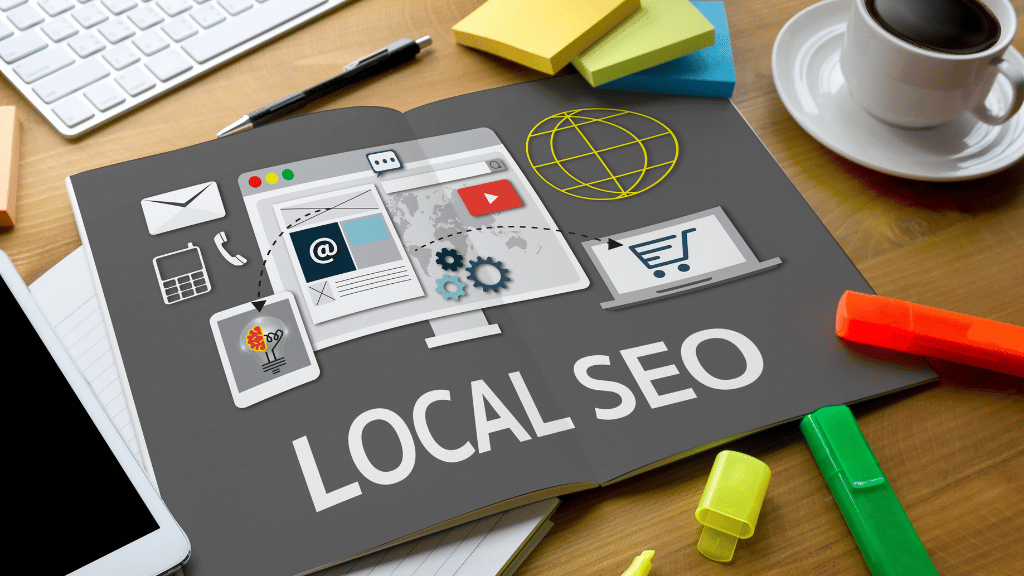Last Updated on 01/08/2025
The practice of enhancing various front-end and back-end components of your website to improve its position in search results and attract more visitors is known as on-page SEO, also referred to as on-site SEO. On-page SEO comprises content components, site architectural elements, and HTML elements.
On-page SEO is essential since it tells Google about your website and how you create value for users and customers. It helps with website optimization for both human visitors and search engine robots.
If you want your website to rank well and attract new visitors, it must be designed, published, and optimized for Google and other search engines.
The changes you make to your website to optimize it are visible to visitors, unlike off-page and technical SEO factors, which are not always obvious. On-page SEO is known as “on-page.”
On-page SEO is your responsibility; you must execute it properly. Let’s now discuss the components of on-page SEO.
On-Page SEO Elements:
- High-Quality Page Content
- Page Titles
- Headers
- Meta Descriptions – ( increase CTR Only)
- Image Alt-text
- Structured Markup
- Page URLs
- Internal Linking
- Mobile Responsiveness
- Site Speed
Download the best on-page- SEO checklist: https://shahidshahmiri.com/on-page-seo-checklist
Importance of On-Page SEO:
Google adjusts its algorithm regularly to comprehend better user intent and the entire user experience after a user lands on a page. For this reason, it’s crucial to keep up with best practices and master SEO.
Additionally, user experience is a Top priority for Google; therefore, it’s essential to incorporate on-page SEO tactics into your overall plan.
A well-optimized website helps Google organize and rank your page by making the content easier to understand and interpret. In essence, you’re helping Google carry out its tasks more effectively.
All on-page SEO components can be divided into three groups:
- Content elements
- HTML elements
- Site architecture elements
These components are separated into sections below.
Content Elements
The elements of your site’s copy and content are referred to as content elements. This section will primarily focus on creating valuable page content that benefits your users and signals to Google that your website is credible and useful.
- High-Quality Page Content
Page content is the center of on-page SEO. It clarifies to users and search engines the purpose of your website and business.
The process of producing high-quality content begins with selecting pertinent keywords and themes. Conduct keyword research by typing phrases into Google to see what websites and competitors’ web pages come up with. Additionally, you can utilize tools such as UberSuggest, Answer the Public, and Ahrefs.
Here are some guidelines for producing high-quality page content:
- Naturally, incorporate both short- and long-tail keywords.
- Include interesting and timely visual content.
- Write specifically for your target buyer persona(s).
- Solve the issue your audience is facing.
- Make content that others will want to share and link to.
- Use CTAs to offer and product pages to increase conversions.
The page content is the core of the on-page SEO process, allowing you to provide value to both Google and your site users. Spend enough time and money creating and optimizing the page content since it is the foundation for all other on-page SEO components.
HTML Elements
The elements in your source code are referred to as HTML elements.
Page Titles
One of the most crucial SEO components is your website’s page titles (also known as title tags).
The Ultimate Guide to Startups
Titles describe what is on the corresponding pages to visitors and search engines.
To ensure that your web pages rank for the correct reason, include the focus keyword for each page in the title. Try to use your keyword as casually as possible.
The following are some excellent practices for creating page titles:
- To ensure that your titles display properly, keep them short—under 60 characters, as per Google’s recent update. Although Google doesn’t set a character limit, its display titles are limited to 600 pixels in length. If you limit the length of your titles to 60 characters or less, they won’t be abbreviated in search results.
- Don’t overuse terms in the title. Modern search engines are sharper than ever and have been built to explicitly monitor (and penalize!) content unnaturally filled with keywords. Keyword stuffing makes for a spammy and tacky reading experience.
- Ensure that it pertains to the page.
- Avoid using full capitals.
- Put your company’s name in the title.
- Headers:
Headers, commonly referred to as body tags, are the HTML elements <h1>,<h2>,<h3>, and so on.
What is a startup?
These tags let people navigate your content more easily and help search engines understand which parts of your content are the most important and relevant.
Headers should contain important keywords, but avoid using the same ones as the page title.
Your <h1> and <h2> headers should contain your most crucial keywords.
Meta Descriptions:
The brief page summaries displayed beneath the title in search results are meta descriptions. Although meta descriptions are not a search engine’s official ranking criteria, they can affect whether or not a user clicks on your page, so they’re equally crucial when performing on-page SEO.

When your content is published on social media (using structured markup, as discussed below), meta descriptions can also be carried over, potentially boosting click-through rates.
What constitutes a strong meta description is as follows:
- Although Google has been known to permit lengthier meta descriptions, keep it to no more than 120 characters.
- Include your keyword or keyword phrase in its entirety.
- Use a complete, impactful sentence (or two).
- Avoid using alphanumeric symbols like —, &, or +.
Image Alt-text
Image alt-text functions like SEO for your images. It provides information to Google and other search engines about the subject matter of your pictures, which is crucial given that Google currently displays almost as many image-based results as text-based ones.
This suggests that visitors may be coming to your website via your photographs. To accomplish this, however, your photos must have alt text.
When including image alt-text, keep the following in mind:
- Be specific and descriptive.
- Ensure it aligns with the overall content of the page.
- There shouldn’t be more than 125 characters.
- Don’t keyword stuff and use keywords sparingly.
Structured Markup:
Structured markup, also known as structured data, is the act of “marking up” the source code of your website to help Google identify and comprehend the various components of your content. The highlighted snippets, knowledge panels, and other content elements you see when you conduct a Google search are all made possible by structured markup. Additionally, it explains why your specific page information displays so nicely when someone shares your material on social media.
Although structured data is often regarded as a technical aspect of SEO, I’ve included it here because improving it enhances users’ on-page experience.
Site Architecture Elements:
The components that make up your website and site pages are site architecture elements. If your website is well-designed, Google and other search engines can easily crawl its pages and information.
Page URLs:
Your page URLs should be easy for users and search engines to understand. They are crucial for maintaining the consistency of your site structure as you develop internal pages such as blog entries, subpages, and other kinds of pages.

Here are some ideas for making URLs that are search engine-friendly:
- Eliminate the additional, pointless words.
- Use no more than a few keywords.
- If possible, use HTTPS, as Google now considers it a ranking factor.
Internal Linking:
Internal linking is the process of using hyperlinks to point to other relevant pages on your website. It is essential for on-page SEO, as it keeps users on the site for longer and informs Google that your site is valuable and noteworthy.
Additionally, Google has more time to crawl and index your website pages, the longer visitors stay on your site. This helps Google understand your website better and can improve its visibility in search engine results.
Mobile Responsiveness:
Google has started to prefer websites with faster mobile speeds, even for desktop searches.

It is crucial to select a website hosting service, site design, and theme, as well as content arrangement, that is readable and usable on mobile devices. If you’re unsure if your site is mobile-ready, use Google’s Mobile-Friendly Test tool.
Site Speed:
Your site needs to load rapidly, whether on a desktop or a mobile device. Page speed is of the utmost significance for on-page SEO.
Google is primarily concerned about the user experience. It is aware that if your website loads slowly or inconsistently, users are less likely to stay on it. Additionally, site performance may impact conversions and ROI.
You can use Google’s PageSpeed Insights tool at any moment to check your website’s speed. Although site speed and mobile responsiveness are both part of technical SEO, I’m including them here because improving these aspects enhances users’ on-page experiences.
Introduction to Off-Page SEO?
Off-page SEO refers to any SEO tactics that don’t include modifying or adding content to your website.
Off-page SEO and link building were once frequently conflated. However, there are several off-page SEO tactics you may utilize, including:
- Brand building
- Citation building
- Content marketing
- Social media and more.
These tactics help users and search engines better understand your website while increasing its authority, trust, and relevancy.
Consider it like this:
- Off-page SEO = another website or platform
- On-page SEO = your website
Importance of Off-Page SEO:
Think of off-page SEO as boosting your website’s domain authority. Without it, your website might struggle to outrank sites with greater authority.
Websites with higher authority typically rank higher than those with low or no authority because search engines perceive them as more trustworthy, relevant, and reliable.
Search engines need to know that many people use, like, and share your website. One method to demonstrate this is through links; however, link building should not be your primary goal. Let’s examine the many extra off-page SEO tactics you can use.
Techniques for Off-Page SEO that Work:
Here are some of the off-page strategies you may employ to increase authority and organic search traffic:
- Link Building
- Social Media
- Local SEO
- Content Marketing
Link Building:
Links from other web servers function as endorsements for your domain.
The more votes you receive, the higher your rank in search results. In contrast, persuading Google that your website is a reliable, authoritative source will be more difficult if you receive fewer votes. Backlinks serve as a form of endorsement that you require from other pages. The first off-page tactic on your list should be creating external links.

Links come in a variety of forms that you can acquire:
- Links that you earn from other websites, where customers or editorial publishers mention your brand naturally.
- Built links require work on your part, such as contacting publishers to obtain link attribution or a mention.
It’s crucial to employ ethical link-building techniques because black hat techniques, such as repeatedly posting links to your website in forums and comment sections, can result in Google penalties.
Check out the complete guide on link building.
Social Media:
More than an SEO strategy, you’ve probably considered social media to be a tool for brand exposure. However, social networking is a fantastic strategy to raise your search engine ranking and build your domain authority.
Sharing information on social media and directing users to your website allows Google to recognize that you’re receiving traffic from various sources, indicating that your website must contain engaging, high-quality content. This is why it’s crucial to regularly engage with your audience on social media and utilize it to share valuable content. Increased involvement will probably lead to additional shares, backlinks, and clicks, all of which contribute to the development of domain authority.
Local SEO:
Optimizing a website for local search results by using the local SEO method in Google My Business. Firms with physical locations or those that cater to local customers, such as grocers, air conditioning companies, or hair salons, place more emphasis on Local SEO.

You have to send signals to local search engines for this to function. Why do you do this? Here are a few significant examples:
- Include Google Business Profile and other regional and national business directories in your company’s listing.
- Respond to reviews left about you on review websites like TripAdvisor and Yelp by claiming your listing.
- Request positive internet evaluations from your clients.
- Maintain a consistent contact list across all digital channels.
Content Marketing:
By providing them with material that meets their requirements and addresses their pain points, content marketing enables you to attract and reach your target audience. You can utilize techniques such as guest blogging, downloadable offers, surveys, and reports in conjunction with your on-page content marketing initiatives, including blog articles.
These procedures are excellent approaches to increasing website traffic, generating new leads, and improving your search engine ranking.
Consider guest posting, which has several advantages. The first is the potential for expanding your target market’s readership. The second is the value of the backlink you can obtain by having content posted as an article on a high-authority domain. Last but not least, guest writing might increase your website’s traffic, a crucial ranking criterion.
Factors for Link Building SEO:
Google and other search engines have become tighter over time about what behaviors they reward and penalize. People began employing various tactics to obtain backlinks after it became clear that link building was a crucial ranking factor. They do anything from posting links on forums to buying links.
Once they realized this, search engines began to penalize the use of unethical or unnatural link placements. Here are some things to think about as you design your link-building plan today:
- The quantity of referring domains – According to Google, the more domains that point to your website, the more trust people have in it.
- Link authority – Being cited by high authority domains is preferable to having many referring domains.
- Relevance – The link must be relevant to your website. Imagine you run a pet toy business. The National Dog Association’s connection is more credible than that of a lifestyle blogger.
- Anchor text – The precise text that hyperlinks to your website and serves as its anchor should be informative and pertinent without being spammy.
Conclusion:
The main distinction between on-page and off-page SEO is that on-page optimization aspects are under your control on your website. The off-site variables are less definite because you must develop connections with other webmasters to obtain them.
An effective search engine optimization strategy must concentrate on both tactics to achieve the greatest ranks in Google, Yahoo, and Bing. There is no clear winner when comparing on-page SEO versus off-page SEO because they must work together to produce the best results for your website.
P.S. Read our SEO Question Answer Blog here!


